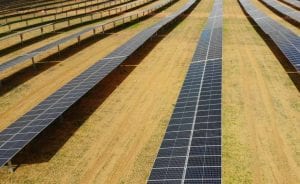On Monday, Sweden’s 5.5GW of wind farms contributed more energy to the Scandinavian country’s grid than its 9.5GW of nuclear power plants, a renewable energy achievement that prompted the below tweet by the Executive Secretary of the UN Framework Convention on Climate Change (UNFCCC), Christiana Figuerres.
Today, Sweden generated more energy with #wind than with #nuclear. Demonstrates potential of #renewables#SB42#COP21pic.twitter.com/1blrHJFIAq
— Christiana Figueres (@CFigueres) May 31, 2015
As the table shared by Figueres shows, hydro (vattenkraft) was the biggest energy supplier for Sweden on June 1, followed by wind (vindkraft), nuclear (kärnkraft) and small amounts of biomass (varmekraft) and unspecified fossil fuels (ospecificerat).
To put this in context, Sweden – which has one of the world’s highest individual levels of energy consumption – generated 152.5TWh in 2013, of which 65.8TWh (43%) was from nuclear and 61.3TWh (40%) from hydro. Wind provided only 10TWh and various fossil fuels 5TWh and biofuels & waste 10.6TWh. (Apparently, by law, grid operator Svenska Kraftnatt must ensure there is about 2,000 MWe winter reserve capacity.)
According to the World Nuclear Association, Sweden currently has 10 operating nuclear power reactors (9487MWe) which usually provide about 40 per cent of its electricity needs. The country’s total wind power capacity at the end of 2014 was 5,425MW from around 840 wind farms – between 15 and 20 per cent of the mix.
Nuclear has been on an interesting journey in Sweden, with its Parliament voting to phase it out way back in 1980, and then repealing this policy in June 2010, after which time some 1600MWe of new capacity was added in upgrades to existing reactors.
Sweden’s wind energy profile, on the other hand, has been on a fairly steep and steady upwards trajectory over the past few years, boosted by the common renewable support scheme it launched with Norway in 2012 – a first of its kind in the world, according to Reuters – to boost output from renewable energy sources by 26.4 terawatt-hours (TWh) by 2020.

According to IEA wind (and as you can see reflected in the table above, taken from The wind Power), over the past five years total installed wind generation in Sweden has boomed from 1,560MW at the end of 2009, to 4,459MW from 2,681 wind turbines at the end of 2013 – and then to 5425MW at the end of 2014.








